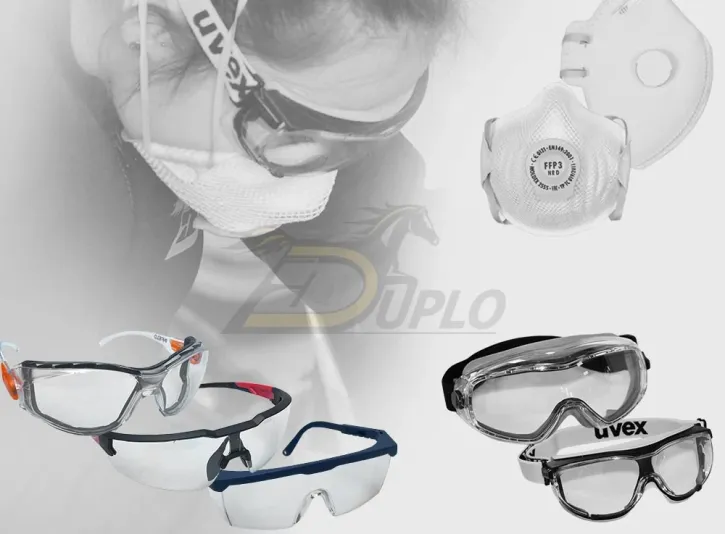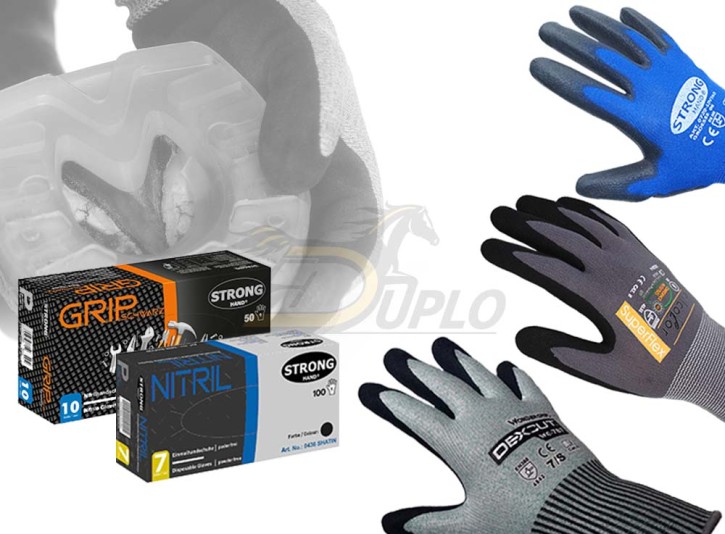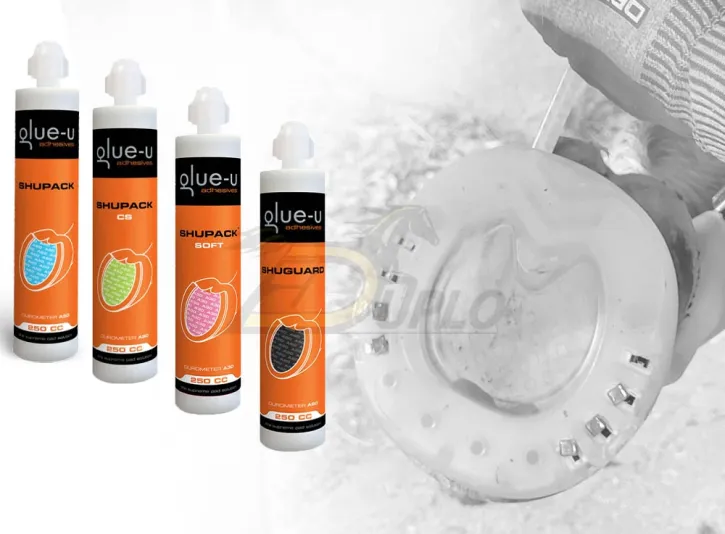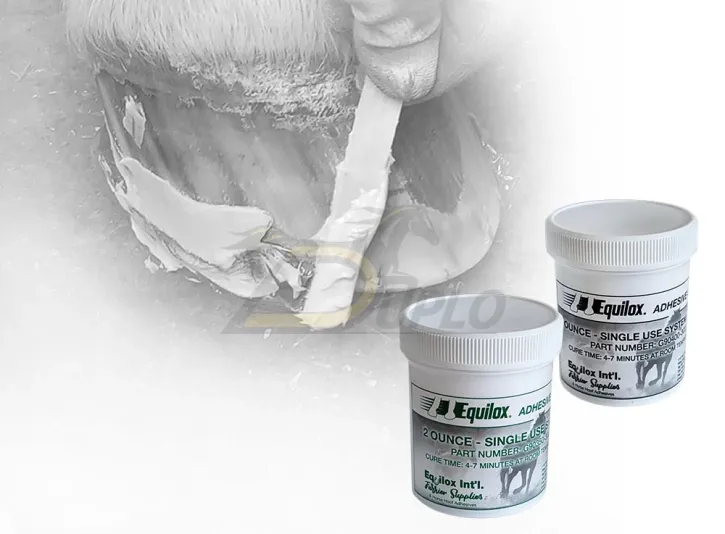Minimizing Health Risks During Horseshoeing – Protection from Dust, Germs & Particles!
Almost every horse owner is familiar with the saying, "No hoof, no horse". The hoof—and therefore hoof health—is essential to a horse’s well-being. Especially when the hoof is not in optimal condition, horse owners and hoof care professionals search for the best possible solution. However, in the effort to achieve the ideal hoof protection and care, one crucial aspect is often overlooked: both the farrier and the horse owner may be exposed to certain health risks. Many auxiliary products such as adhesives, hoof cleaners, padding materials, and hoof care products contain substances that can be harmful to health. But it’s not just chemical ingredients that pose a risk— even natural extracts can trigger allergic reactions.
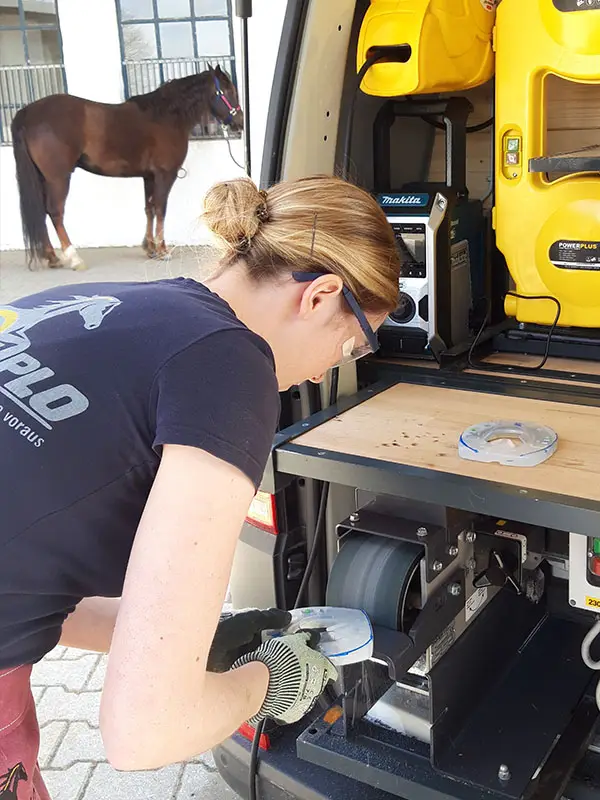
The health risks in a farrier's daily work are not limited to exposure to wind and weather or the sometimes unpredictable behavior of horses. Various hoof care and horseshoeing tasks can cause tiny particles to break off, posing a potential hazard—especially to the eyes.
Being aware of these health risks is essential. Only those who recognize potential dangers can take effective preventive measures.
Minimizing Health Risks with Personal Protective Equipment
Always consider protecting your skin, eyes, and respiratory system. Gloves, safety glasses, and a safety mask are often indispensable to prevent exposure to harmful substances and fumes.
When forging, grinding, or rasping, tiny metal shavings, sparks, or particles can break off and pose a risk to the eyes. Wearing safety glasses is essential in these situations to prevent serious injuries— a precaution taken by nearly every farrier.
When working with synthetic materials, ensure proper ventilation at all times. Avoid overheating or burning plastic components, as inhaling the resulting fumes can be harmful.
Some of these health risks don’t just affect farriers but also horse owners and stable staff who work with horses daily. Many hoof care products, for example, are regularly applied by horse owners themselves.
Those who are aware of potential health risks and take appropriate protective measures actively contribute to their own safety and long-term well-being.
Health Protection During Horseshoeing and Daily Stable Work
We strive to provide detailed product descriptions that thoroughly highlight all potential risks associated with horseshoeing and offer solutions to minimize these risks—for example, through personal protective equipment. To support this, we have revised our safety flyer in accordance with GPSR guidelines and also provide essential safety information on hoof care products, padding materials, and horseshoeing supplies. Many risks—though unfortunately not all—can be mitigated by ensuring proper ventilation, maintaining a clean and safe workspace, and having clear escape routes. That’s why we also offer a selection of personal protective equipment in our product range.
A farrier’s personal protective equipment typically includes a farrier apron, work gloves, and safety footwear. However, eye and respiratory protection are often overlooked.
Please always refer to the safety instructions linked to our products, as well as general information on personal protective equipment for farriers and horse owners.
Skin and Hand Protection When Working on the Horse’s Hoof
Working on hooves involves a wide range of tasks. In many situations, farriers instinctively protect their hands—whether when handling a sharp hoof rasp or during particularly dirty and unpleasant-smelling tasks.
However, even for tasks that may seem harmless at first glance, hand protection should not be overlooked. Wearing gloves is especially important when using padding materials, adhesives, disinfectants, or hoof care products.
To ensure your hands are always well protected, we offer a comprehensive selection ranging from disposable gloves to the popular WonderGrip® cut-resistant gloves.
You can find all available gloves at one master article. They are displayed in the cross-selling section below or can be found using the search bar in our shop.
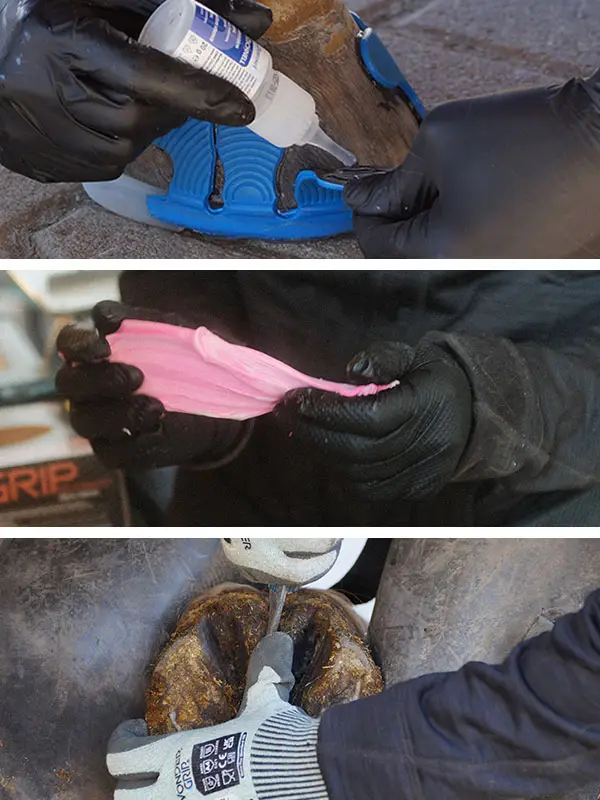
Personal Protective Equipment When Resetting a Glue-On Shoe
In addition to hand protection, many steps in the horseshoeing process pose risks to the eyes and respiratory system of the farrier. Always be mindful of airborne grinding dust, particles, or fumes, and avoid inhaling them.
In many cases, ensuring proper ventilation and avoiding direct exposure to dust or fumes is sufficient. However, with the growing popularity of glue-on horseshoes, we are often asked whether the glu-on tabs can be reused. That is why, we want to highlight a significant health risk associated with resuing glue-on tabs - a task that, in our opinion, requires more than just ensuring good ventilation.
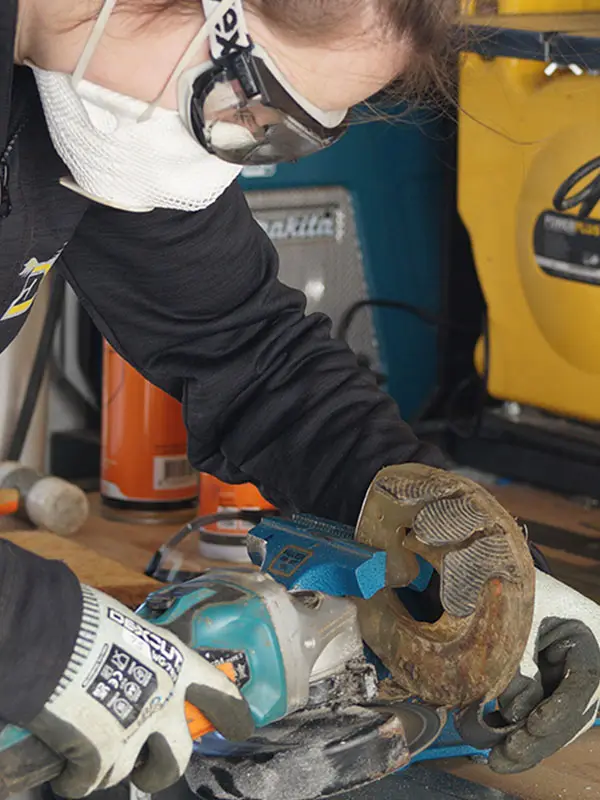
Health Risks from Grinding Dust of the Instant Adhesive – Essential Personal Protective Equipment
When asked whether a glue-on horseshoe can be reused, there is no universal answer, as several factors need to be considered. In general, the entire glue-on horseshoe can be reused if...
- the base plate itself is reusable (see FAQ Abrasion and Durability),
- the welding seam between glue-on tabs and horseshoe is complete and solid,
- there are no cracks in the glue-on tabs, and
- the hoof side of the Wolf Busch® glue-on tabs is still completely covered with the black elastomer.
Since a properly bonded surface requires an evenly roughened surface, any remaining adhesive on the tabs could weaken the stability of the next bond. That’s why the residue must be removed if you choose to reuse the glue-on horseshoe.
This step requires personal protective equipment, as the grinding dust from the adhesive poses significant health risks. To protect your eyes and respiratory system, we strongly recommend wearing full-coverage safety glasses along with an FFP3 mask. Ensure proper ventilation and maintain a safe distance from both the horse and its owner. For your safety, please also refer to the additional safety instructions provided with the adhesive.
Proper Eye and Respiratory Protection for Horseshoeing – Safety Glasses and FFP3 Masks
Use safety glasses that are suited to the specific task (e.g., protection against dust, small particles, or chemicals). Safety glasses designed for chemical protection must meet different requirements than those intended for dust protection.
If you wear other safety equipment like a dusk mask or ear plugs along with safety glasses, ensure that this additional protective equipment does not compromise the fit or positioning of the glasses. Especially during horseshoeing and daily work with horses, it is essential that your field of vision remains unobstructed by personal protective equipment.
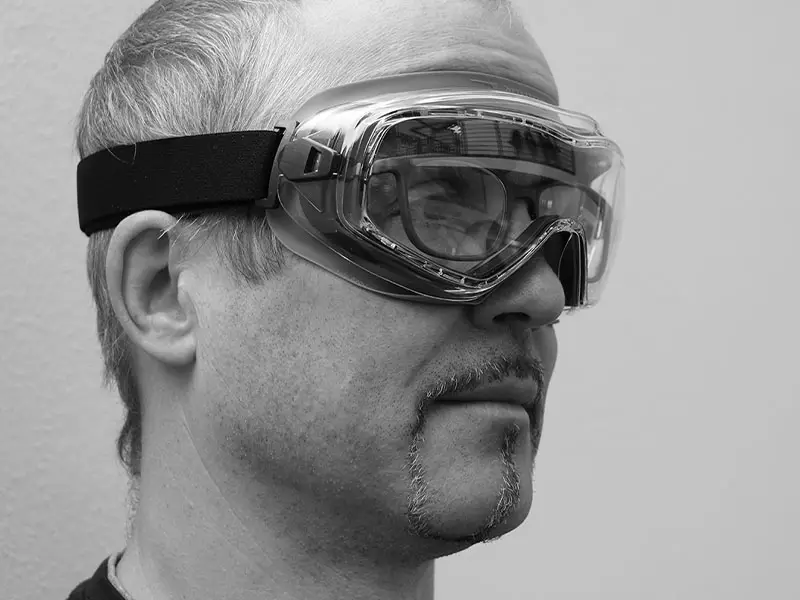
Just like any other kind of safety equipment, safety glasses must fit well to provide effective eye protection. Ensure that the headband is neither too loose nor too tight to prevent pressure points or slipping. As shown in the photo, the Fortis Sirius full-coverage safety glasses can be worn over most glasses.
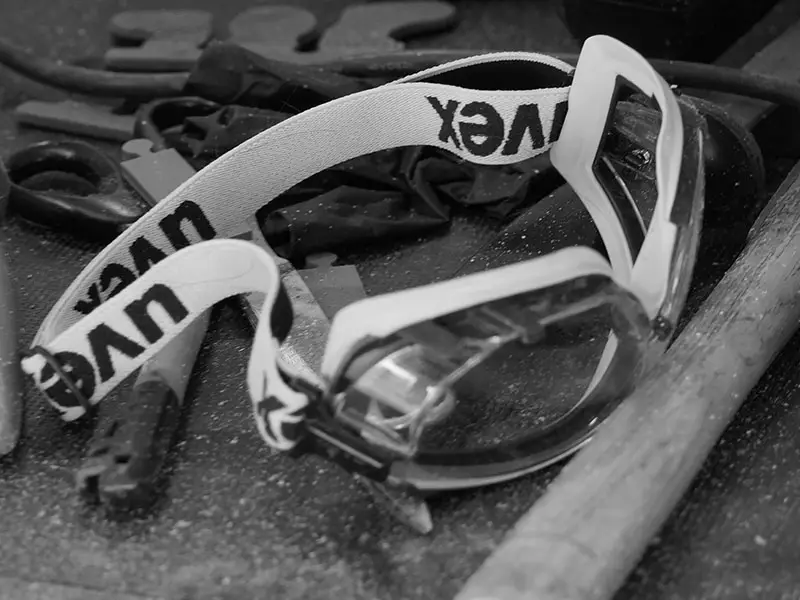
Always inspect your personal protective equipment for damage before each use. Regularly clean and
disinfect
your safety glasses to maintain clear vision and prevent scratches caused by dirt particles.
Cracks, scratches, or other damage could compromise their protective function.
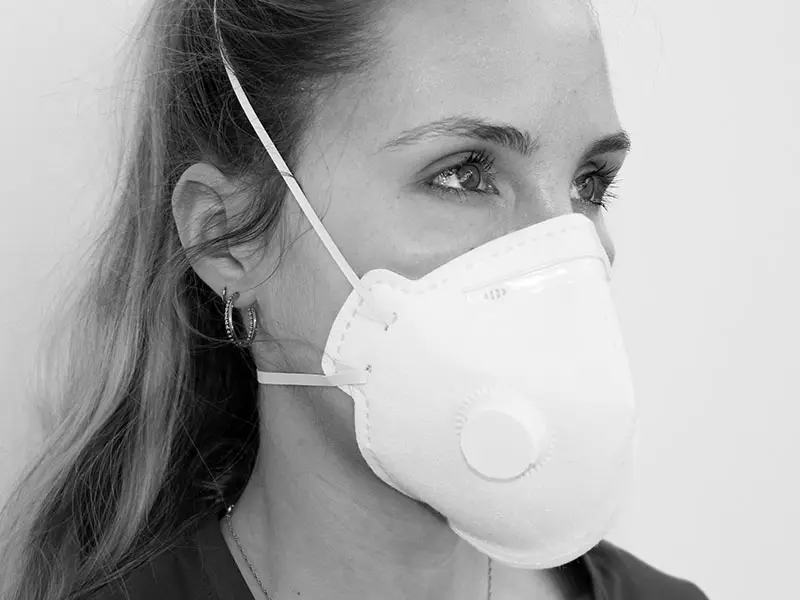
The correct selection (type, size, and fit), proper use, and maintenance of masks are essential to ensure their effectiveness. Store masks in a clean, dry, and safe place, and use them only as directed by the manufacturer.
Usage and Safety Instructions for Personal Protective Equipment
Always inspect your safety equipment for any damage before use. Do not use it if you notice any defects. Ensure proper storage, regular cleaning, and usage in accordance with the manufacturer's instructions. When using personal protective equipment during horseshoeing or daily horse care, always follow the safety guidelines of the products you are working with. In the FAQ → Safety section, we have compiled all relevant safety information for you.
Safety Equipment - Product Features of Full-Coverage Safety Glasses
| Product Category | Personal Protective Equipment (PPE) |
|---|---|
| Brands | Including Uvex, Fortis |
| Function | Eye protection, safety glasses, full-coverage safety glasses, protection against dust and particles, health protection during horseshoeing, workplace safety, occupational safety |
| Packaging Unit | Sold individually |
| Returns & Exchanges | Possible within the EU under certain conditions within 3 months. For returns outside the EU, please contact our Customer Service Team. For full details, please refer to the FAQ → Service & Conditions section. |
Safety Equipment - Product Features of FFP3 Masks
| Product Category | Personal Protective Equipment (PPE) |
|---|---|
| Brands | Various, see product description |
| Function | Respiratory protection, protection against dust and particles, health protection during horseshoeing, workplace safety |
| Packaging Unit | Sold individually |
| Returns & Exchanges | FFP3 respirators are sealed hygiene products. Once the seal is broken, the right of return and cancellation is void. Opening the packaging constitutes a binding purchase. If the seal remains intact, the same conditions as for full-coverage safety glasses apply. |

